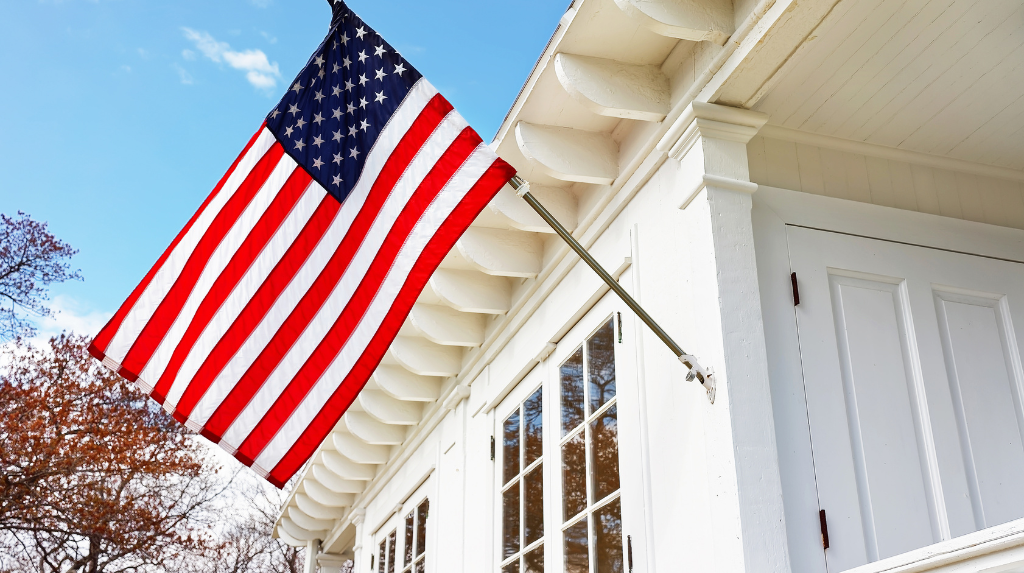Having a large land area that has a mix of terrains and being home to a rich diverse culture, the United States has always been listed as a prime tourist attraction for international visitors. No matter if such a visit is planned to be business, recreational, or connected with the need for medical assistance, it is significant to learn more about the prospects for getting a U. S. visa. In the following guide, we will focus on answering some of the most general questions related to the VWP, such as who should apply, the criteria entitled to the program, the pros and cons of the program, and some crucial factors to consider.
What is the VWP The Visa Waiver Program?
The Visa Waiver Program (VWP) is a special arrangement that permits citizens that are from certain participant countries to enter the United States without having to apply for a Visa. Applicants who wish as otherwise qualified to travel to the United States with a “B” visa which only permits a single or multiple entries can simply register online for the VWP.
VWP Eligibility Criteria
To take advantage of the Visa Waiver Program, you must meet the following criteria:
1. Citizenship from a VWP-Participating Country
It means that you should come from a country that is listed in the Visa Waiver Program of the U. S. State Department. These are nations that have agreements with the U. S to allow its citizens easy entry into their territories based on the fact that such people have seldom broken one or overstayed their visas to the United States.
2. Clean Visa Record
For example, for a business visitor visa, you should not have breached the terms of any previous nonimmigrant visa, and your record should be clean. This involves staying for a specified duration of the prior visit according to the visa and I- 94, and also staying within the legal bounds of U. S. Immigration laws.
3. Short-Term Visit
Your plan can only be for a temporary visit in the United States, specifically, less than ninety (90) days or three months; for business or tourism. One important thing that should be noted is that the VWP is only valid as permission for short-term stays and does not include the possibility of extended stays.
4. Non-Immigrant Intent
First of all, you cannot have an intention of getting a permanent residence in the United about a legal or an unlawful stay. The VWP is strictly for tourists – it does not permit individuals to work or settle within the participating country.
5. Approved Travel Routes
The VWP should state that entry into the U. S. can be made only through precleared air or sea carriers. There are some situations when people cannot use VWP, for example, if they travel by private airplanes or other non-VWP-certified aircraft.
6. No Recent Travel to Certain Countries
You cannot have traveled to or been in the territory of certain countries and entities as of March 1, 2011, which include North Korea, Iran, Iraq, Libya, Somalia, Sudan, Syria, and Yemen. There are certain specific instances in which this is allowed, for example when the individual is traveling on official diplomatic or military business. The Department of Homeland Security (DHS) can waive this exclusion on grounds of special interest, within the US laws and security.
7. Not a National of Restricted Countries
If you happen to be a national of one of these countries, you cannot be a citizen of Iraq, Syria, Iran, Sudan, or North Korea even if you hold a passport from any of the accepted VWP countries. Research your country’s laws for deciding your nationality which may vary that apply.
There are certain advantages and disadvantages of the Visa Waiver Program, and the following points will explain the truth behind it.
Advantages of VWP
Streamlined Process: For the Group, there are no hurdles in applying for a visa so the preparation for the traveling is less complicated and efficient.
90-Day Stay: To be allowed in the country, a VWP traveler can visit the United States of America for up to ninety days which is ideal for attending to business or bare a vacation.
Online Registration: One can easily enroll for ESTA online which is more convenient for travelers and saves time as compared to the other more traditional methods of paperwork.
Considerations for VWP
Limited Stay: The allowed visit length for VWP is 90 days which may not be suitable for all sorts of travels.
No Extension Rights: Another thing to remember is that unlike those arriving in the U. S. with a B-2 tourist visa, the VWP entrants cannot petition for a change, extension of status, or adjustment of their nonimmigrant status while inside the United States.
Basic Rights Waived: VWP travelers do not have the same rights as visa holders, including the right to a hearing in front of an immigration judge or the ability to apply for extensions without leaving the U.S.
Extending Your Stay: B-2 Visa vs. VWP
If you’re considering whether to opt for a B-2 tourist visa or the VWP, it’s essential to understand the key differences in terms of stay duration and flexibility.
VWP Stay Duration
Maximum stay: 90 days
B-2 Visa Stay Duration
Maximum stay: Up to six months
Option to apply for extensions, allowing for a more extended visit
Rights Waived under VWP
VWP entrants give up certain rights that B-2 visa holders enjoy:
Immigration Judge Hearing: VWP travelers are not entitled to a hearing in front of an immigration judge if the U.S. government seeks removal.
Extension Requests: Unlike B-2 visa holders, VWP entrants cannot request extensions or changes to their nonimmigrant status while in the United States.
However, there are exceptions to the 90-day stay rule, particularly for medical emergencies or situations where individuals fear persecution in their home country. These exceptions allow for extended stays or asylum applications, subject to approval.
Additionally, if you become an immediate relative of a U.S. citizen, you may apply for a green card (adjustment of status) while in the U.S. on the VWP. However, this should not have been your original intent upon entry.
Preparing for VWP Entry
While the VWP offers convenience, travelers must prepare in advance to meet entry requirements:
Valid Passport: Ensure your passport from your home country is valid for at least six months beyond your intended U.S. stay. It should also have a scannable electronic chip containing your biometric information (e-passport).
Return Ticket: Purchase a return ticket to your home country or another foreign destination, unless you plan to arrive in your vehicle.
ESTA Authorization: Apply for and obtain authorization through the U.S. State Department’s Electronic System for Travel Authorization (ESTA) before departing for your trip.
Financial Proof: Gather evidence demonstrating your financial capability to support yourself during your U.S. stay without seeking employment.
Health Requirements: Comply with U.S. health requirements, including COVID-19 vaccination mandates applicable to most non-citizens.
U.S. Entry: What to Expect
Upon arriving in the U.S., Customs and Border Patrol (CBP) officers will review your documents, including the I-94W form. They will check for any past visa violations or criminal records in an electronic database. CBP officers have the authority to deny entry to any person who does not meet the criteria for admission.
While VWP entrants have the advantage of streamlined entry, they also bear the risk of being denied entry without the opportunity for a hearing or appeal. This emphasizes the importance of meeting all entry requirements and complying with U.S. laws.
The Visa Waiver Program offers travelers a convenient way to visit the United States for short-term business, pleasure, or medical purposes. However, it comes with limitations on stay duration and certain rights waived. Choosing between the VWP and a B-2 tourist visa should be based on your specific travel needs and circumstances.
For a smooth VWP experience, thorough preparation is key. Ensure you meet all eligibility criteria, have the required documentation, and adhere to U.S. entry requirements. Whether you opt for the VWP or a traditional visa, the United States welcomes visitors from around the world to explore its wonders and opportunities.





